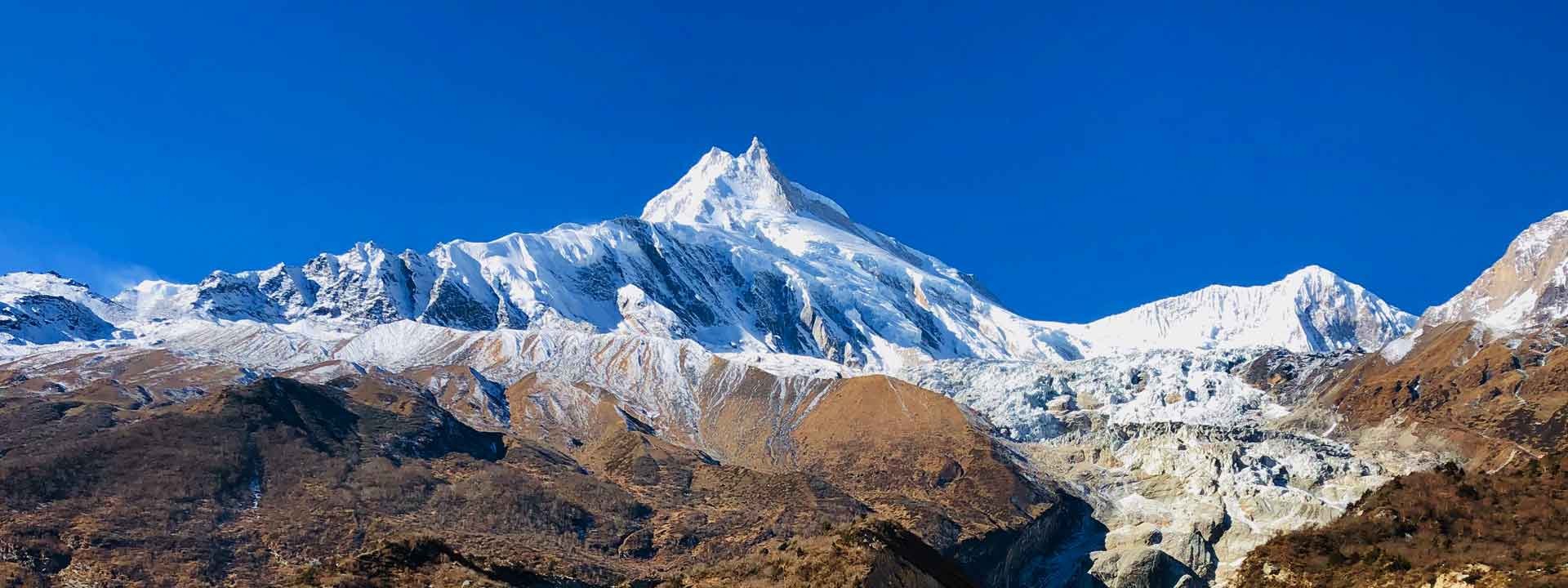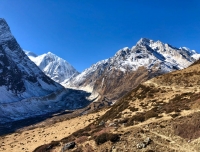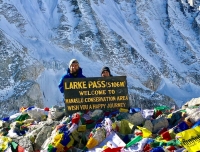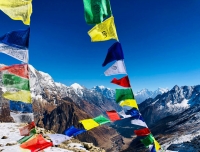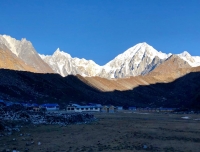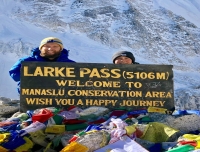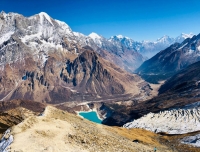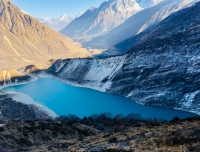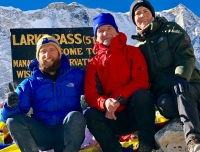One of the most well-known treks in Nepal circles the eighth-highest peak in the world, Manaslu, before going through the Larkya La pass. Anyone seeking for a difficult trip in a remote area of the Nepal Himalaya might find this journey appealing.
Manaslu Circuit Trek is a great place to hike if you're looking for a less crowded option. You'll see stunning views of the Ganesh Himal Range and Mount Manaslu while walking through both Hindu and Tibetan-style Buddhist villages. The trek starts in Soti Khola, which is not too far from Kathmandu, and takes about a day to get there by car. You'll pass through forests, ridges, rice terraces, and suspension bridges before reaching Deng, where you'll start to see snow peaks. As you continue trekking, you'll reach Namrung village, which has an incredible viewpoint for Ganesh Himal and Mt. Himalchuli. After acclimatizing in Samagaon, you'll cross the highest pass in Manaslue, Larkya Pass (5125 m), which can be tough in the snow, but the scenery is worth it. You'll descend through beautiful alpine meadows at Bhimtang before joining the main Annapurna Circuit route and heading to the trailhead at Besisahar.
Manaslu Circuit Trek Difficulty
Manaslu Circuit Trek lies in the northern Himalayan range, in the west-central part of Gorkha district. Manaslu Circuit Trekking takes about 17 days on average, but we can make it longer or shorter. The average distance each day will be approximately 15–20 KM, and the time will be about 8 hours each day. The trek can be made longer or shorter depending on the length of your walking days and starting point.
- You need to be physically and mentally prepared for Manaslu Trekking
- It is important to train yourself and get used to walking on uneven surfaces in himalaya
- Crossing the Larkya La Pass at altitude 5,213 m is the most challenging day during this entire trek. But at the same time, it’s a more a test of your patience level.
- You’ve to walk on snow but you don’t need any technical skills to cross this high alpine pass.
- You will experience more wilderness, remote, local mountain culture and adventure during Manaslu Circuit trek.
Best time to visit Manaslu circuit trekking
The best time to go on the Manaslu Circuit Trek in Nepal is during the autumn season (September to November) and spring season (March to May). During these months, the weather is mostly dry and stable, with clear skies and great visibility. The temperatures are also pleasant during the day, making it easier to trek.
However, it is important to note that the Manaslu region can be quite cold at higher elevations, so it is important to bring proper gear to stay warm. Avoiding the monsoon season (June to August) is recommended as heavy rainfall can make the trail slippery and dangerous. Similarly, winter months (December to February) can be extremely cold and snowy, making it challenging for trekking.
Highlights of Manaslu Circuit Trekking
- A scenic drive from Kathmandu to SotiKhola
- Views of highest peaks in the world like Mt. Manaslu, LamjungHimal, Mt. Annapurna II etc.
- Trek along the BudhiGanadaki River gorge
- Experience natural scenery, flora and fauna
- Discover unique moutnain cultural of Hindu’s and Buddhists
